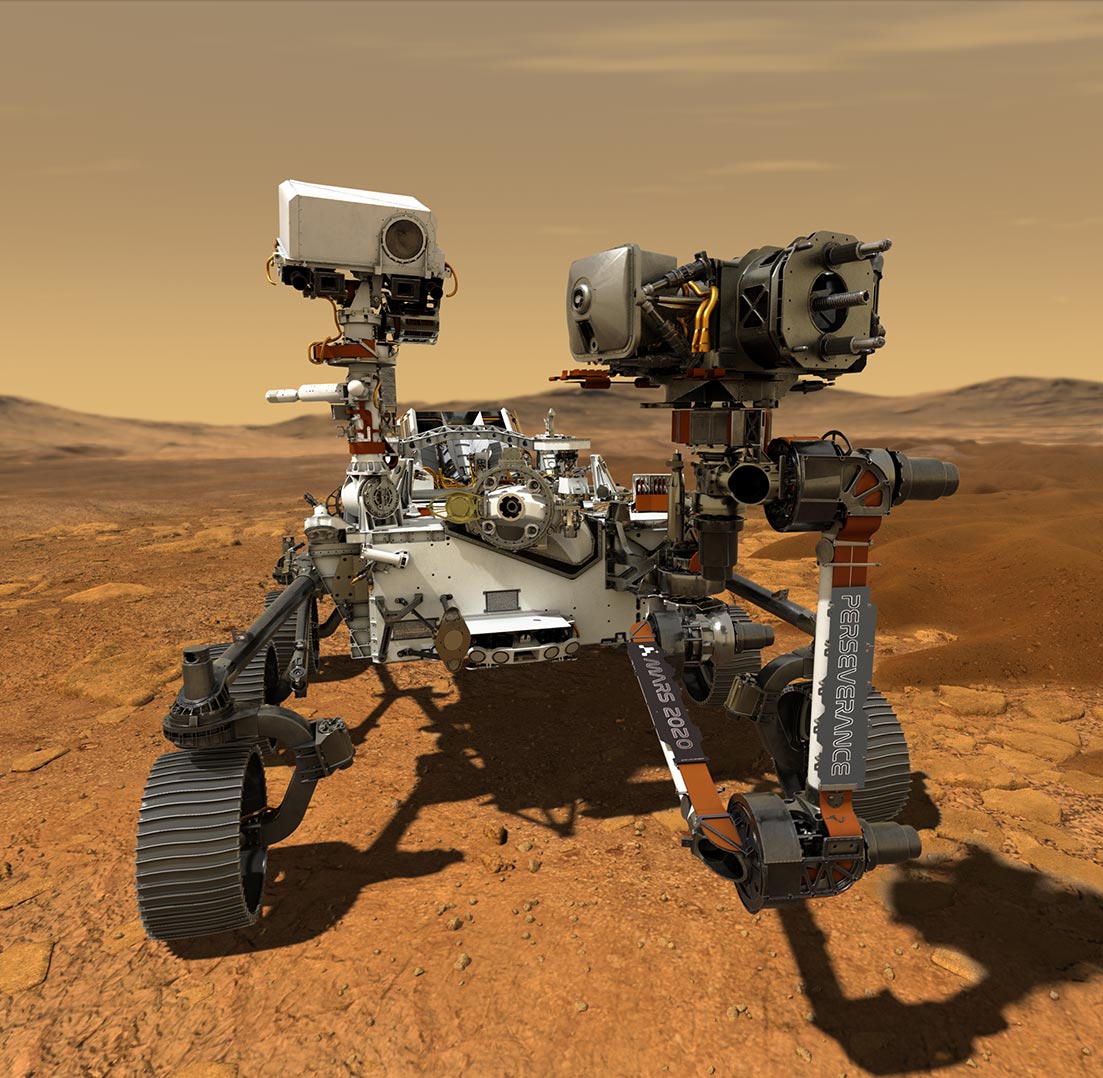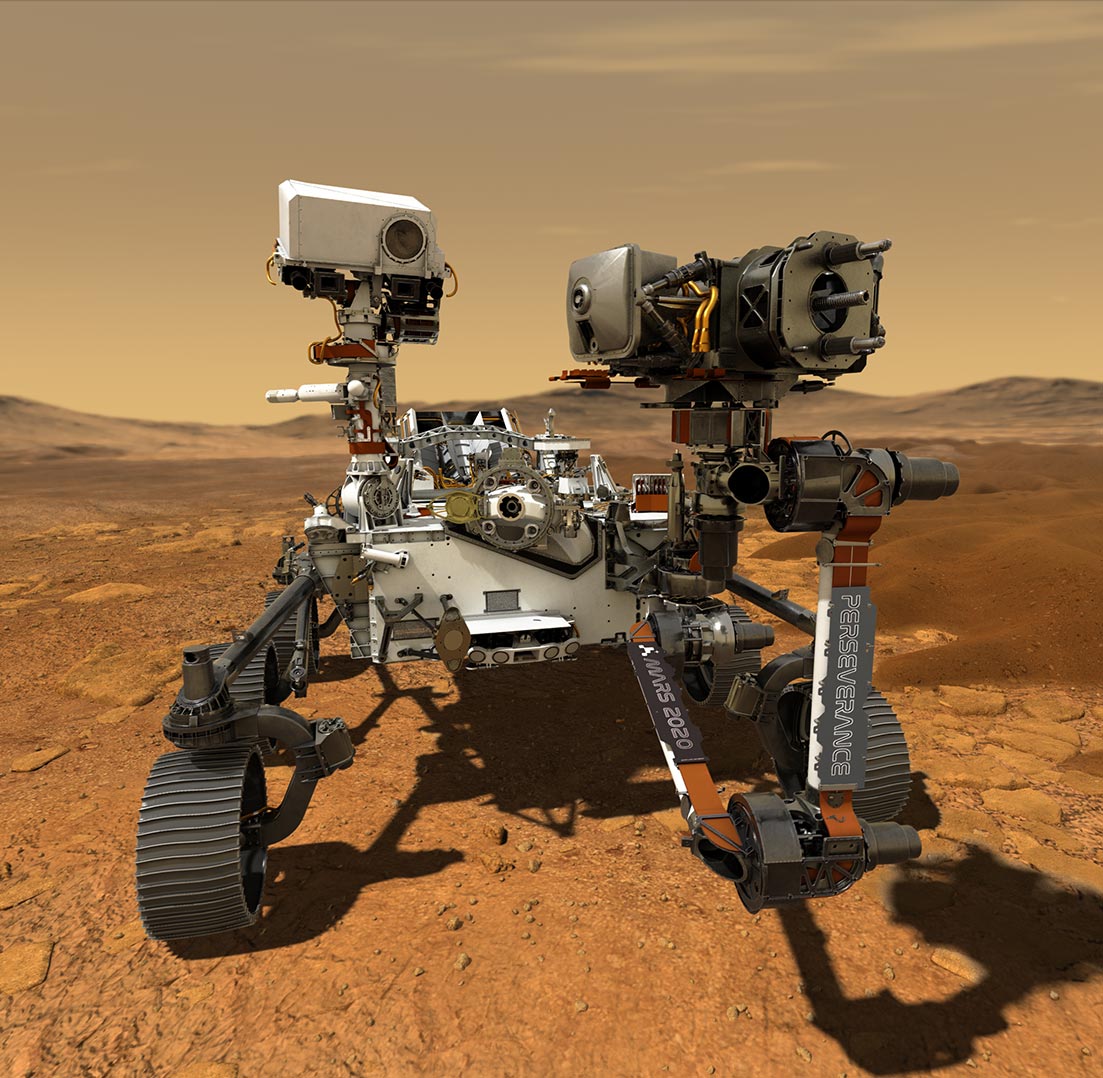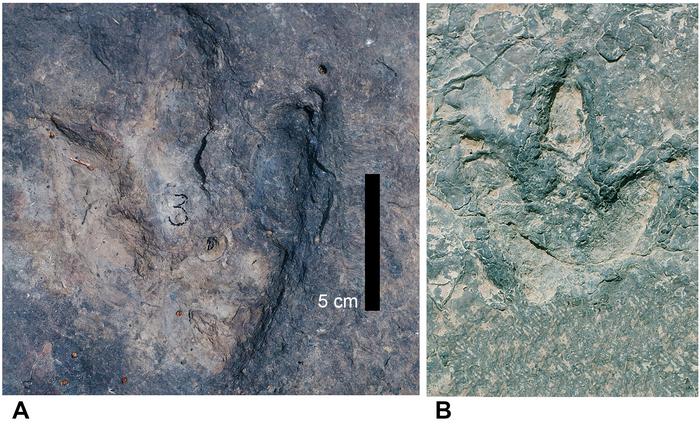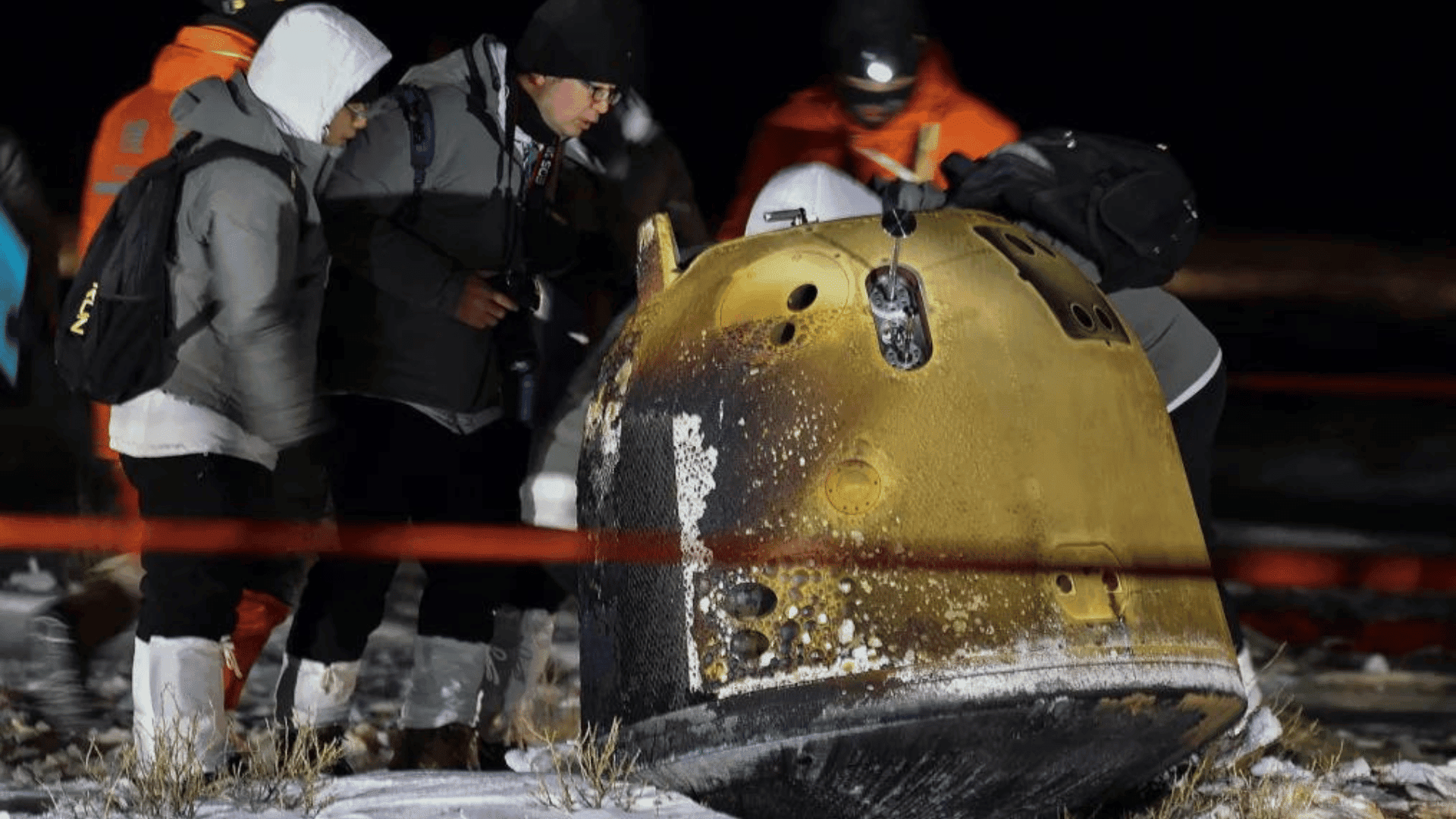
Esta ilustración muestra el rover Perseverance de la NASA operando en la superficie de Marte. crédito: NASA
¡Lo hicimos! Persevera en el delta, inundándonos de fotos increíbles para rematar.
Geologists can learn a lot about the course of events by looking at contacts, which are the boundaries between different types of rocks. Was the transition from one type of rock to another gradual or abrupt? Is the contact indicative of a change in the environment or how the rocks were deposited? Was there a long period of time between the different kinds of rocks? All of these are questions that we can look into at contacts, and they will help us better understand the history of Jezero crater.

Mars Perseverance Sol 411 – Left Mastcam-Z Camera: This image, captured by the Mastcam-Z instrument, is part of a mosaic acquired of the delta front. The geometry of the layers and size of the grains that make up these rocks can tell us about the history of the delta. This image was acquired on April 16, 2022 (Sol 411) at the local mean solar time of 09:39:36. Credit: NASA/JPL-Caltech/ASU
Analyzing rover data is one way we learn about Mars’ geologic past, but planetary geologists can also study “terrestrial analogs.” These are locations on Earth where we can make valuable comparisons to what we see on other planetary bodies, such as Mars, to help us understand their landscapes. I’ve enjoyed hearing comparisons between Jezero and Earth from members of our Science Team; most recently we discussed how the Jezero delta sediments might be similar to those in Greece. As a British-Greek member of the team, I used to drive through the Gulf of Corinth each summer to visit family in Ακράτα (Akrata). Little did I know that I was gazing out the window at a wonderful analog for some of the deltaic features we’re seeing in Jezero today!

Mars Perseverance Sol 409 – Left Mastcam-Z Camera: The Mastcam-Z instrument snapped this close up of ‘Kodiak’, a remnant from when the delta was more extensive. The Mars 2020 team has had eyes on Kodiak since last year, but now we can see details that weren’t previously visible. This raw image has been stretched to better highlight features in the middle of the image. This image was acquired on April 14, 2022 (Sol 409) at the local mean solar time of 10:06:40. Credit: NASA/JPL-Caltech/ASU
Over the next few months, we’ll use the entire suite of Perseverance instruments to explore the delta. We expect to find rocks that will be rather different from the igneous rocks (meaning they formed from magma or lava) of the crater floor. During that exploration, we will also take samples of some of the most interesting and astrobiologically promising rocks. I can’t wait to see what Perseverance will find!
Written by Eleni Ravanis, Student Collaborator at University of Hawai at Manoa.

«Erudito en viajes incurable. Pensador. Nerd zombi certificado. Pionero de la televisión extrema. Explorador general. Webaholic».







